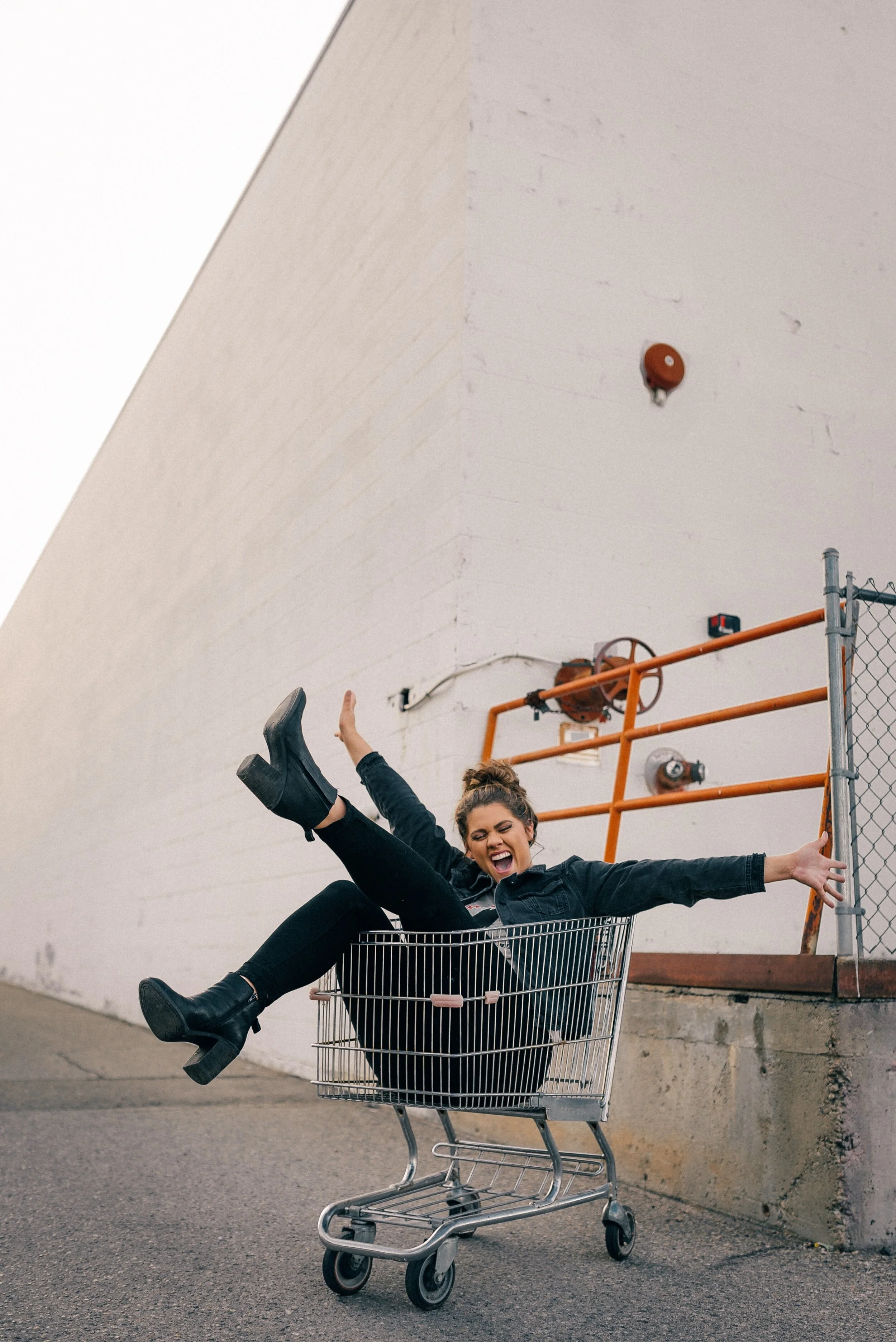25 Tips for Successful Thrifting - #SaveMoneySaveThePlanet
When I was a kid, my mom used to wake me up early on Saturdays to bring me to the local flea market or to scout nearby yard sales. I would pick at miscellaneous toys and gadgets, while my parents browsed for clothes and homeware. When we would go to thrift stores, I would quickly do a pass through of the aisles and claim that I didn’t find anything interesting. I didn’t find it particularly interesting at the time, but now, as a twenty-something year old, I realized how much fun and affordable it was. For some thrifting is new, and for others, it was an activity out of necessity. Some people prefer to thrift to find unique clothing pieces, while others do it for sustainability reasons. Regardless of your reason, here are some tips that can help jumpstart your thrifting journey:
Don’t Be Afraid of Old and Used
If you’re new to thrifting, your first hurdle is to get over any stigma or fear of thrifting. Thrifting is often stigmatized, but more and more people are comfortable and advocating to buy second hand. Don’t be afraid of items that are older. It’s a good thing to extend the life of an item!
Show up Early
Thrift stores may restock at different times of day, but your best bet to any thrifting experience is to go early so you can have first pick. Showing up early is also key when you go to a flea market or yard sale.
Bring Cash (or at least check payment methods beforehand)
Smaller thrift stores are sometimes cash-only, so before you fill your cart or basket, be sure to check if you can pay for it. Cash is also king when you go to garage/yard sales and flea markets and can be leveraged well for negotiations.
Give Yourself Time to Browse
Thrifting can be a long and arduous process. Things aren’t always organized, you’ll have to do a lot of sorting, and you may not even be looking for something in particular. You might get frustrated when you go to the thrift store, so give yourself some leeway and take the time to roam the aisles.
Have a Gameplan and Prioritize
If you are looking for something in particular, hit up those spots first. Don’t worry about working from one end of the store to the other, or working clockwise or some other approach method. If you know you want to browse the home decor aisles, hit those up first. If you are visiting several thrift stores in one day, prioritize stores that have a better selection.
Check what Days have Discounts
Many thrift stores have designated sale days. Sometimes they break it down by item category, like tops, bottoms, homeware, books, and more on a given day of the week. Sometimes they appoint certain color tags or stickers with a certain percent off sale. Get to know what those are so you have a better idea of pricing.
Wear a Thrifting Outfit
What do I mean by a thrifting outfit? A thrifting outfit is something that helps make your thrifting experience easier. Not only should it be comfortable, but it should make it easier to try on clothes. Wear something that you can easily try other clothing over or something that is easy to change out of in the dressing room (if available). You want to be efficient. I like to wear leggings and layers that I can easily take off, for example.
Sign Up for a Rewards Program
Some larger thrift stores may implement a rewards program where every time you spend a certain amount of dollars you will accumulate points. These points may be redeemed for cashback or a discount on your next order. Some stores may offer an app that helps streamline this process and can even give you updates on ongoing sales!
Learn to Mend and DIY
If you found an almost-perfect article of clothing and the only thing stopping you from buying it is something super minor, consider mending or fixing the issue yourself. If you think cropping or dying something would level up a piece of clothing, don’t just think about it, do it!
But be Realistic about Repairs
Of course, don’t buy everything and be realistic about the things you want to fix. Not all things are worth fixing or are easy enough to mend. Don’t let it become another DIY project that sits idle for months on end.
There are more than just Thrift Stores
Depending where you live or how far you’re willing to go, and how much you want to research, you can find other places to buy second hand goods. Sure, we’ve all heard of thrift stores, but don’t forget to browse antique stores, consignment shops, flea markets, garage sales, estate sales, Amazon return pallets, unclaimed baggage centers, and more. Your local town may have a designated time of year for garage or yard sales. The large flea market may only occur every 2nd Sunday of the month. It’s important that you do your research to see what’s around.
Bring your own bags and sanitizer
Don’t forget to bring your own bags for your trip. It’s pertinent you also bring sanitizer. Thrift stores do not wash their clothes before they put them on the rack, so always bring some sanitizer. You’ll be touching a lot of stuff! If you’re considering thrifting furniture, don’t forget some extra blankets in your car to protect your seats or trunk.
Consider Surrounding Neighborhoods
A thrift store’s inventory can often be reflective of the local population donating to it. This means that a thrift store in a wealthier area may have more expensive items or more brand names. This isn’t always the case, but sometimes the merchandise does reflect the neighborhood. This doesn’t mean that thrift stores in other towns aren’t good. Every store is full of hidden gems for different people. The one bad thing about scouting for more affluent stores is that the store may recognize its location and will charge higher prices.
Check Your Labels
Check the labels of the items you are looking at. If it’s clothing, check for brands. If you don’t recognize a brand, do a quick Google search to see if it’s a nice brand. Don’t forget to check the care tag to see the material/fabric composition and if you need to dry clean it or not. If you’re looking at homeware or furniture, see if there’s a tag, sticker, stamp, or imprint on the back or underside of the item. This can help note if it’s vintage, or just some vase from a 2008 Crate & Barrel collection.
Browse Clothes Outside of your Normal Sizing
Clothings comes in all shapes and sizes and because of vanity sizing, the numbers and letters on the tags may be arbitrary and inconsistent. Don’t limit yourself to the rack labeled “medium” because that could still range a lot in size. Additionally, a lot of clothes can be misplaced and sometimes some hidden gems are where you least expect it.
Browse Clothes Outside of your Normal Sections
If you normally shop in the Women’s sections, you shouldn’t feel limited to just those sections. Like the last tip, clothing comes in all shapes and sizes and you may prefer the style, cut, patterns, and fit of clothes on the other racks. You don’t need to conform. I personally like to browse the Men’s section for flannels and hoodies, for example.
Test Electronics
If you found a gadget or appliance that you find interesting, see if there are any outlets close by that you can plug it into and check. Usually thrift stores will allocate a few outlets for this sole purpose. You don’t want to spend money on a broken light, blender, or vinyl player.
Bring Batteries and a Screwdriver or Measuring Tape
Some may say this is overkill, but if you’re purposely looking for electronics or even children’s toys, consider bringing different batteries and a screwdriver with you. Throw it in a baggie and keep it in your purse for thrift trips. Not all items can be tested via plug, so if you come well-prepared with batteries, you may find some great working finds.
Don’t Forget to Browse the Glass Cases
Items in the glass cases or behind the counter sometimes have better items of value in them (but sometimes not). Don’t skip the glass cases or counters. You never know when you’ll find a vintage camera, beautiful jewelry and accessories, or even designer sunglasses.
Keep Track of Measurements
Besides knowing a general idea of your clothing sizes, keep track of measurements of other items. If you’re looking for furniture, note the dimensions of a given space in your home. If you want a basket to fit on your shelf, note the height and depth. Do yourself a favor and bring a tape measure with you when you shop.
Always do a Last Thorough Check
When shopping second hand, there are often imperfections and it’s up to you to recognize the flaws and what’s worth accepting or rejecting. Check for stains, tears/rips, missing buttons, faulty zippers, chips, loose strings or fixtures, and more.
Learn to Negotiate
Whether it’s at a garage/yard sale, flea market, or online, learn how to negotiate for a better offer. You never know what the seller is willing to take and haggling can help you score an even better deal. Bundling can sometimes be a great way to get a deal.
Thrift Online
Thrifting online used to mean browsing Ebay or Craigslist, but not you can thrift for clothing and more on so many different platforms. ThredUp, Facebook Marketplace, Facebook Swap groups, Depop, Poshmark, AptDeco, and even Instagram are all examples of places where you can buy things second hand. While browsing from the comfort of your home is nice, just be mindful of possible shipping costs!
Know Where Your Money is Going
Many thrift stores exist to support specific charities or causes. If it’s a smaller thrift store, it may even be a charity that’s very local to the area, rather than a national or regional one. Stores like GoodWill and Salvation Army will probably post about their proceeds. However, not all stores are for charity. They may actually be for-profit. If you feel strongly about it, check to see what your store supports.
Clean and Wash Immediately
When you get back from the thrift store, don’t let your recent purchases sit. Wash your clothes immediately so you can incorporate it into your wardrobe immediately. Wipe down or clean other items as soon as possible so it doesn't collect dust in the corner. Don’t forget that soap and water can go a long way in making an item usable again.
Lastly, have fun thrifting!
Do you thrift? Got any other tips others may find useful? Leave it below.
#SaveMoneySaveThePlanet - 25 Tips for Successful Thrifting










